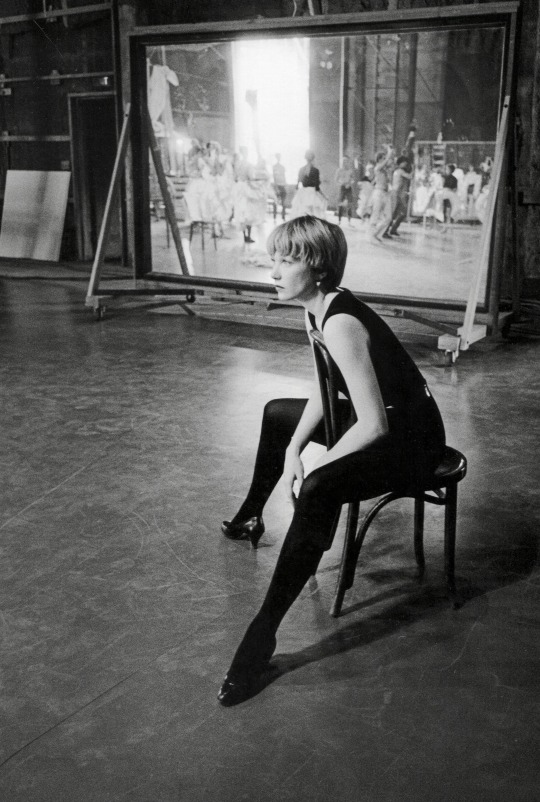#can-can
Explore tagged Tumblr posts
Text

What does it mean if these are my favorite katamari cousins…
2K notes
·
View notes
Text

Frank Sinatra photographed by Bob Willoughby on the set of Can-Can (1960)
460 notes
·
View notes
Text



101 notes
·
View notes
Text

This Week Magazine
June 21, 1953
35 notes
·
View notes
Video
Postcard by Charles L Naillod by totallymystified Via Flickr: French artist (1876-1956).
#Charles L Naillod#artist#illustrator#can-can#dancer#glamour#woman#beauty#postcard#illustration#chromo-litho#chromolithography#fin-de-ciecle#la belle époque#retro#vintage#nostalgia#flickr
2 notes
·
View notes
Text

Dance To Swingin' Things From Cole Porter's Can-Can
36 notes
·
View notes
Text

Frank Sinatra and Shirley MacLaine in Can-Can (Walter Lang)
Cast: Shirley MacLaine, Frank Sinatra, Maurice Chevalier, Louis Jourdan, Juliet Prowse, Marcel Dalio, Leon Belasco, Nestor Paiva, John A. Neris, Jean Del Val, Ann Codee. Screenplay: Dorothy Kingsley, Charles Lederer, based on a musical comedy book by Abe Burrows. Cinematography: William H. Daniels. Art direction: Jack Martin Smith, Lyle R. Wheeler. Film editing: Robert L. Simpson. Music: Nelson Riddle; songs: Cole Porter.
2 notes
·
View notes
Text

Ennio Marchetto as Charlie Chaplin for his show “Ennio: The Living Paper Cartoon” at Club Fugazi


10 notes
·
View notes
Text
The Scandalous Can-Can Amused Cincinnati Until One Newspaper Clutched Its Pearls
No one really knows when or where the dance known as the can-can originated. Although associated with France, some authorities point to the exotic corners of Asia. Other boffins find roots in the Middle Ages, and a few discern a mutation of the Eighteenth-Century quadrille.
It took a long time for the can-can to land in Cincinnati. The first rumblings appeared in the local newspapers around 1860 with a few brief mentions about the sensation this dance caused in Paris. Mozart Hall, on Vine Street just north of Fountain Square, seems to have been the first Cincinnati venue to present the can-can locally. The Daily Gazette [10 March 1868] approved:
“Undine [a sort of Victorian “Little Mermaid”] drew a very large house last evening. The scenes are splendid as ever, and their audiences lose none of their enthusiasm. The new feature of the evening, the Can-Can, was a perfect success, eclipsing the former ballet completely.”
Among the Cincinnati theatrical community, anything that sold out one theater was soon added to the bill at several other stages and so it was with the innovative can-can. The Gazette [8 July 1868] reported that a newly redecorated Wood’s Theater, across the street from Mozart Hall, now offered this “fancy dance”:
“The little theater on Vine Street is so clean, with its new paint, and so cool, with its lace curtains, and its company so good, that there is little wonder that it is crowded nightly. The programme is full and complete, and very attractive. The rage for fancy dancing has got into the company, and can-can is given nightly.”
Only the Cincinnati Enquirer grumbled about the new can-can fad, but even the staid “Grey Lady of Vine Street” devoted a couple of lines [20 July 1869] in defense of the dance, quoting an otherwise unidentified “Cincinnati lady”:
“Now, I believe I know enough to know when a dance is improper. To me the can-can is full of all grace and refinement and bewitching charms. And I believe it is the fault of those horrid newspapers that have said so much about it.”
Just three days later, the Enquirer, presumably in its role as a “horrid newspaper,” editorialized [23 July 1869] against a production offered by Yale’s concert hall and saloon on Walnut Street:
“The Can-Can is not the most moral thing in the world when put forward in its most presentable shape. As rendered by the depraved creatures on Walnut Street it is filthy, obscene and disgusting, without arising to the dignity of the lascivious.”
The Enquirer rejoiced when the proprietor, whose name is variously reported as Phillip Yale, G. Wilkins Yale and J. Croissant-Yale, was arrested a week or so later. The competing Commercial Tribune reported the arrest [2 August 1869] but noted that the key witnesses for the prosecution were all Enquirer reporters:
“The local reporters of the Enquirer, who have assumed to determine the exact degree of immorality characterizing the can-can, as danced in the Walnut Street cellar, have been subpoenaed as witnesses against Yale, and will probably make some interesting revelations concerning this indecency, as compared with the many other indecencies which they seem to have seen.”
The Enquirer’s campaign drove the Yale family out of town. One news item had one of Yale’s sons accompanying one of the can-can dancers, Nellie Whitney, on a train eastward. The article specified that she danced at the Yale saloon on Walnut Street and identifies her as a “cyprian,” in other words, a prostitute. That could be some libelous hyperbole or it could be accurate, but it emphasizes the Enquirer’s objection to women dancing the can-can. While Cincinnati’s on-stage performers were exclusively female, the can-can, among the demimonde, was danced by all genders at Cincinnati’s bohemian soirees.

Despite the Enquirer’s disdain, the can-can continued its invasion of the Queen City. Just as the Yales closed their saloon, an advertisement appeared in the Commercial Tribune [14 August 1869] that Mademoiselle Aline Lefavre, who claimed to have introduced the can-can to the United States, would appear nightly at the Variety Theater on Race Street. In its advertisements, the Variety described Mlle. Lefvare as “the most beautifully formed woman in the world.”
The Commercial Tribune [3 May 1870] observed a sort of irony at work in the city’s esthetic morals. An exhibition that month at Wiswell’s Gallery, largely supported by charging admission to view paintings of “the type men like” as they used to say, featured a canvas depicting a very nude woman titled “Sleeping Beauty.” The paper’s art critic found it interesting that the can-can was condemned while a fully nude woman was celebrated:
“It was formerly a subject of animadversion that our ball-room belles dressed very low down in the neck – that is, wore no clothes much above the pit of the stomach; but had they gone in and become decollete down to their heels, that would simply have been Art – High Art. We see, too, how the moral comes in; to see the lady of the Can-Can is shocking, and we call for the police, but seeing her at second hand, through the eyes of the artist, it is great, and the price is all the same – only twenty-five cents.”
Perhaps the Commercial Tribune convinced the Variety Theater on Race Street to lean into the fine art proposition, because that establishment soon began offering, in addition to the can-can, an exhibition of “tableaux vivants” or “living pictures” in which women, clad only in flesh-colored tights, posed in the manner of Greek statuary or famous paintings. This despite the proprietor enduring several stints in the Workhouse on charges of operating a disorderly house.
Not to be outdone, the Vine Street Opera House announced a program headlined by “The Queen of the Serio-Comic Vocalists” Jennie Engle, Irish comics Mullen and McGee, as well as living pictures, the can-can and something billed as “weird dance.”
The show, it seems, must go on. And so it did. The forces of propriety and the minions of moral turpitude held an uneasy truce throughout most of the 1870s, with an arrest here while a new show popped up there, like whack-a-mole.
The fragile peace was broken dramatically in 1877 by the National Theater who booked Madame Ninon DuClos’ “Dizzy Blondes” for an extended engagement. The troupe claimed to specialize in the authentic Parisian can-can regardless of the reality that Mme. DuClos’ origins lay a lot closer to Dublin than Montmartre. Even though the Blondes were hauled into court and although they had been kicked out of Indianapolis, the show went on in Cincinnati for months. The Cincinnati Star [1 December 1877] simply sighed:
“The Dizzy Blondes at the National Theater have captivated a number of our young men, who come home exclaiming: “Did you ever?”

7 notes
·
View notes
Text

Shirley MacLaine photographed by Bob Willoughby on the set of Can-Can (1960)
405 notes
·
View notes
Text
youtube
Makkeroni, 2008-23 depending on what version this is, there's dozens of remixes that all sound basically the same: "Can Can World", aka a Eurobeat remix of the overture from "Orpheus in the Underworld", aka what if in "Moulin Rouge" Baz Luhrman had hired DJ Crazytimes instead of Fatboy Slim
4 notes
·
View notes
Text
youtube
It’s incredibly difficult to find a good can-can these days… Either the technical skill of the dance gets lost in more modern moves and techniques, or the playful naughtiness gets lost in favor of, again, a more modern understanding of what is sexy. But there’s just something delightfully fun about a dance that is so incredibly skilled and challenging whose erotic appeal is the chance for a half-second’s glimpse of a crouch through split drawers.
3 notes
·
View notes
Text
when you grew up as a lonely uncool girl it will never stop haunting you by the way. you will meet a cool person at a bar or the train station or at a friend's party and you can wear your most stylish outfit and striking eye makeup and you will swear that they can see through all of the facade and see the lonely terribly insecure teenage girl you used to be who desperately wanted to connect and you will swear that they know that there is like an insurmountable gap between you. this will happen forever
#idk you can fake confidence until you can't#i always struggle to remember that people generally think of me as cool. and that i look and act different than how i did at 14
97K notes
·
View notes
Video
Postcard by Charles L Naillod by totallymystified Via Flickr: French artist (1876-1956).
#Charles L Naillod#artist#illustrator#can-can#dancer#glamour#woman#beauty#postcard#illustration#chromo-litho#chromolithography#fin-de-ciecle#la belle époque#retro#vintage#nostalgia#flickr
3 notes
·
View notes



